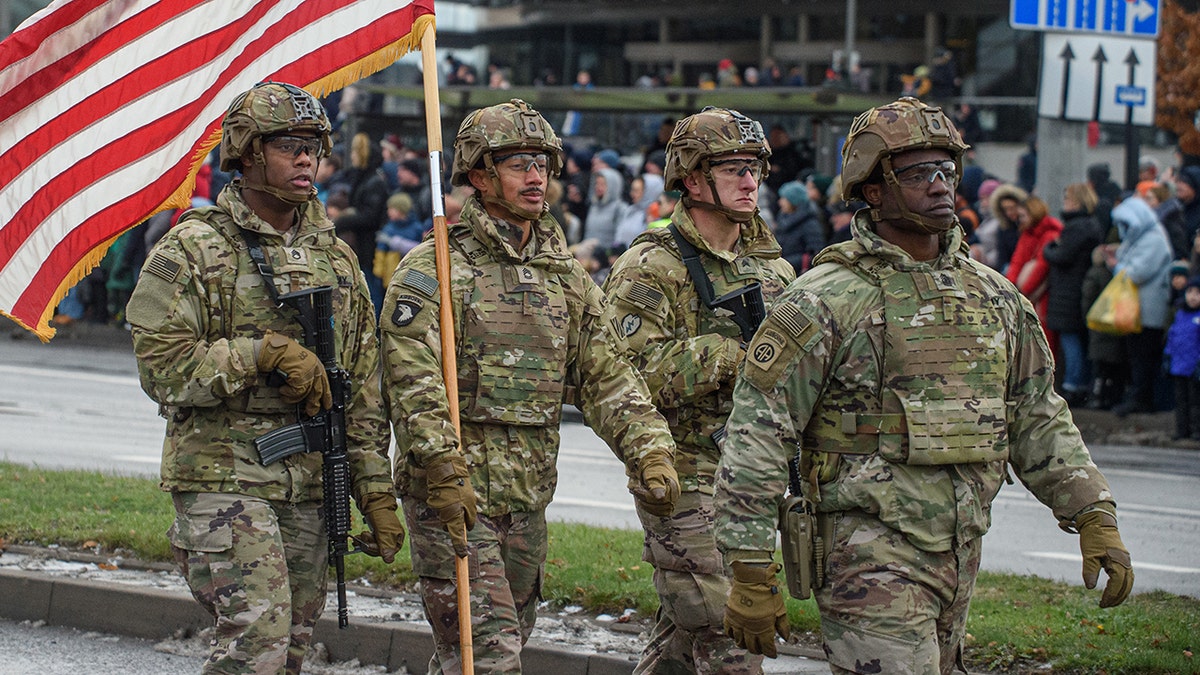Why Army recruitment is down in 2023
Middle East Forum Chief Editor Jim Hanson joins ‘Fox & Friends Weekend’ to explain why the U.S. Army numbers reached their lowest since 1940.
As the U.S. Army struggles with recruitment, the service is cutting its force by about 24,000 in a restructuring that it says will help the service fight in future wars.
The almost 5% of jobs cut will mostly affect posts that have remained empty and not actual soldiers, according to an Army document published Tuesday.
"The Army is not asking current soldiers to leave. As the Army builds back end strength over the next few years, most installations will likely see an increase in the number of soldiers actually stationed there," the Army said.
Most of the jobs being slashed are related to counterinsurgency positions that grew during the wars in Iraq and Afghanistan but are not in high demand today.
US MILITARY NOT READY FOR LOW-TECH WAR: ‘CRISIS’

The U.S. Army is slashing about 5% – or 24,000 – of its force in an effort to restructure the service to be better prepared for future wars. (Yauhen Yerchak/SOPA Images/LightRocket via Getty Images)
There also will be about 10,000 posts cut from cavalry squadrons, Stryker brigade combat teams, infantry brigade combat teams and security force assistance brigades, which are used to train foreign forces.
The Army "is currently significantly over-structured," according to the document, and there aren't enough soldiers to fill existing units. The service is also looking to optimize itself for large scale or multidomain combat operations, a shift away from a close combat, counterinsurgency structure.

The U.S. military missed its recruiting goals in 2023 by 41,000, going into the new year facing a recruiting crisis, a Pentagon official said in December. (AP Photo/Charles Dharapak, File)
The service is currently structured to have up to 494,000 soldiers, but the total number of active duty soldiers is about 445,000. The new plan has Army leaders looking to recruit enough troops through Fiscal Year 2029 to reach a goal of 470,000 active-duty soldiers.
ARMY HELICOPTER CRASH LANDS IN ALABAMA DURING FLIGHT TRAINING
Despite the cuts, the Army said it is looking to add another 7,500 troops for other critical missions, including air-defense and counter-drone units and five new task forces around the world with enhanced cyber, intelligence and long-range strike capabilities.
The U.S. military missed its recruiting goals in 2023 by 41,000, going into the new year facing a recruiting crisis, a Pentagon official said in December.
Military leaders at the House Armed Services Committee hearing in December said a competitive job market, declining eligibility and COVID-19 school closures impacted their ability to recruit, among other things.
The Associated Press contributed to this report.


